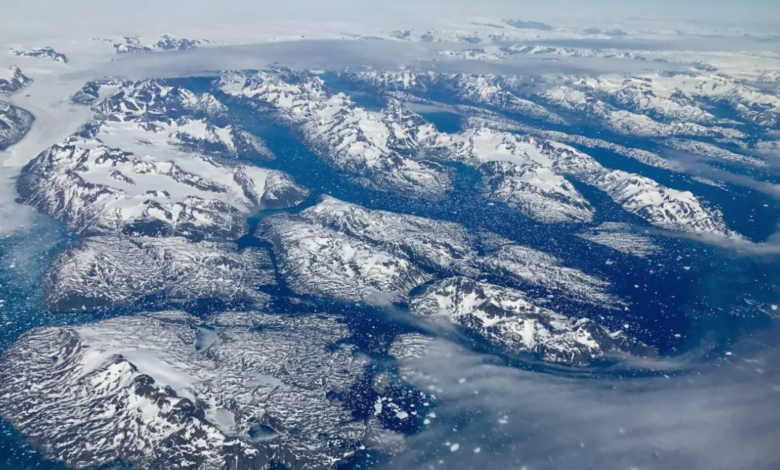We are close to the points of no return of the Greenland ice sheet

The 1st tipping point of the Greenland ice sheet is before 2050 at today’s emissive rhythms
(sustainabilityenvironment.com) – We are fast approaching the first tipping point for the melting of the Greenland ice sheet. And we risk exceeding the second in a few decades. The nearest threshold is that of the 1000 billion tons of CO2 equivalent (Gt co2eq) emitted cumulatively beyond the current level, the second is 2500 Gt CO2eq.
With what impacts? Going beyond the first means irreversibly triggering the melting of the entire southern portion of the Greenland ice sheet. That is to surrender to a rise in sea level of about 1.8 meters in the coming centuries. Instead, entering more than 2500 Gt co2eq into the atmosphere leads to the total disappearance of ice from the island. An event that would take place over many centuries and raise the oceans by 6.9 meters.
The tipping points of the Greenland ice sheet
Expressed in emission volumes, these points of no return seem less looming. But at the current rate (about 40 Gt co2eq/year) it means that we can trigger the first one in 25 years, before mid-century, and the second around 2085. This is stated in a study by the Potsdam Institute for Climate Impact Research published in Geophisical Research Letters.
read also Seas taller than 27 cm, is now “inevitable” for the melting of the Greenland glaciers
“The first tipping point is not far from the current climatic conditions, so we risk getting past it,” says Dennis Höning of the Potsdam Institute. “We cannot continue to emit carbon at the same rate for much longer without overcoming the critical points. Most of the melting of the ice sheet will not happen in the next decade, but it will not be long before we are no longer able to oppose it”.
To determine the thresholds, the authors of the study conducted simulations over a period of 20,000 years varying the amount of carbon emitted. First they identified the points of equilibrium of the ice cap, that is those levels of emissions that allow the ice cover of the Danish island to maintain its extension. Then they calculated which emission levels are needed to pass them, bringing the system back into a state of imbalance that directs it to the next point.





